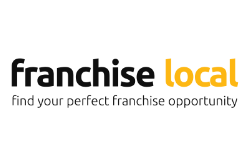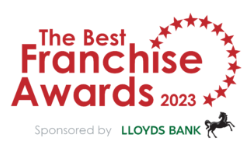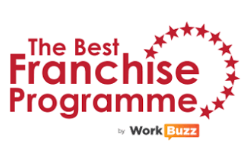If you asked a UK citizen to name a franchise, it wouldn’t be long before they hit upon Subway. Arguably one of Britain’s most recognisable franchises, the growth of the global submarine sandwich chain has been absolutely phenomenal, especially as it arrived on our fair shores less than two decades ago. Having now reached the towering heights of being the world’s largest restaurant operator, it’s evident that the franchise model has worked incredibly well for Subway.
The seed of Subway was first sown when founder Fred DeLuca was looking for a way to fund his studies in medicine; his friend Pete Buck suggested he started a sandwich shop and lent him $1,000 to help get the outlet off the ground. Originally launched in 1965 under the rather inauspicious name ‘Pete’s Super Submarines’, the store quickly scaled and added more outlets, eventually taking the name ‘Subway’ in 1968. And by 1974, DeLuca had begun to look to other expansion methods. As Trevor Haynes, Subway’s area development manager explains, “After Fred got to a small number of stores, he started to look to franchise and that was when it really took off.”
However, it wasn’t until 1996 that the sandwich shop was finally brought to Blighty’s high streets by a pair of entrepreneurs already familiar with the franchise’s system. “They were franchisees in Canada,” says Haynes. “They’d been very successful there and they decided ‘we could try the UK, we’ll look at Brighton’.”
Given the sub is such a uniquely American foodstuff, it’s not hard to see why there might have been some translation required for British audiences to get a handle on what the Subway experience is all about. “Initially people wanted things like butter or they thought ‘where’s the train station?'” laughs Haynes. But it didn’t take long for the public to fall in love with the humble hoagy. “It started to catch hold and really took off,” he says. “People loved the fact that you could choose so many different proteins and salad options.”
With time, Subway began to gather steam. From its modest beginnings in Britain’s premier seaside city, the franchise has mustered an impressive 1,685 outlets across the UK and Ireland. Despite experiencing the same slowdown as most enterprises during the shaky economic climate from”2008 – 2010, the franchise has definitely shifted into a new gear in the last decade. “It’s been developing at a phenomenal pace, particularly since the mid-2000s,” Haynes says. “We’re seeing some fantastic results coming through this year – we’re topping out at about 150 – 160 new locations so it’s really positive.

Josh Russell
When he isn't tooling around on trains in a tux like the Daniel Craig of the Greater Anglia transport system, Russell spends his time living the glamourous life of an enterprise journalist, judging Digital Business of the Year at the National Business Awards and attending conferences like NixonMcInnes' Meaning 2013. However, like all good secret agents, Russell lives a double life - in his case, as a closet revolutionary. Social enterprise, sustainable business and collaborative practices are his true passions, something that he has had plenty of opportunity to air in his features here at Elite Franchise.

Josh Russell
When he isn't tooling around on trains in a tux like the Daniel Craig of the Greater Anglia transport system, Russell spends his time living the glamourous life of an enterprise journalist, judging Digital Business of the Year at the National Business Awards and attending conferences like NixonMcInnes' Meaning 2013. However, like all good secret agents, Russell lives a double life - in his case, as a closet revolutionary. Social enterprise, sustainable business and collaborative practices are his true passions, something that he has had plenty of opportunity to air in his features here at Elite Franchise.


































